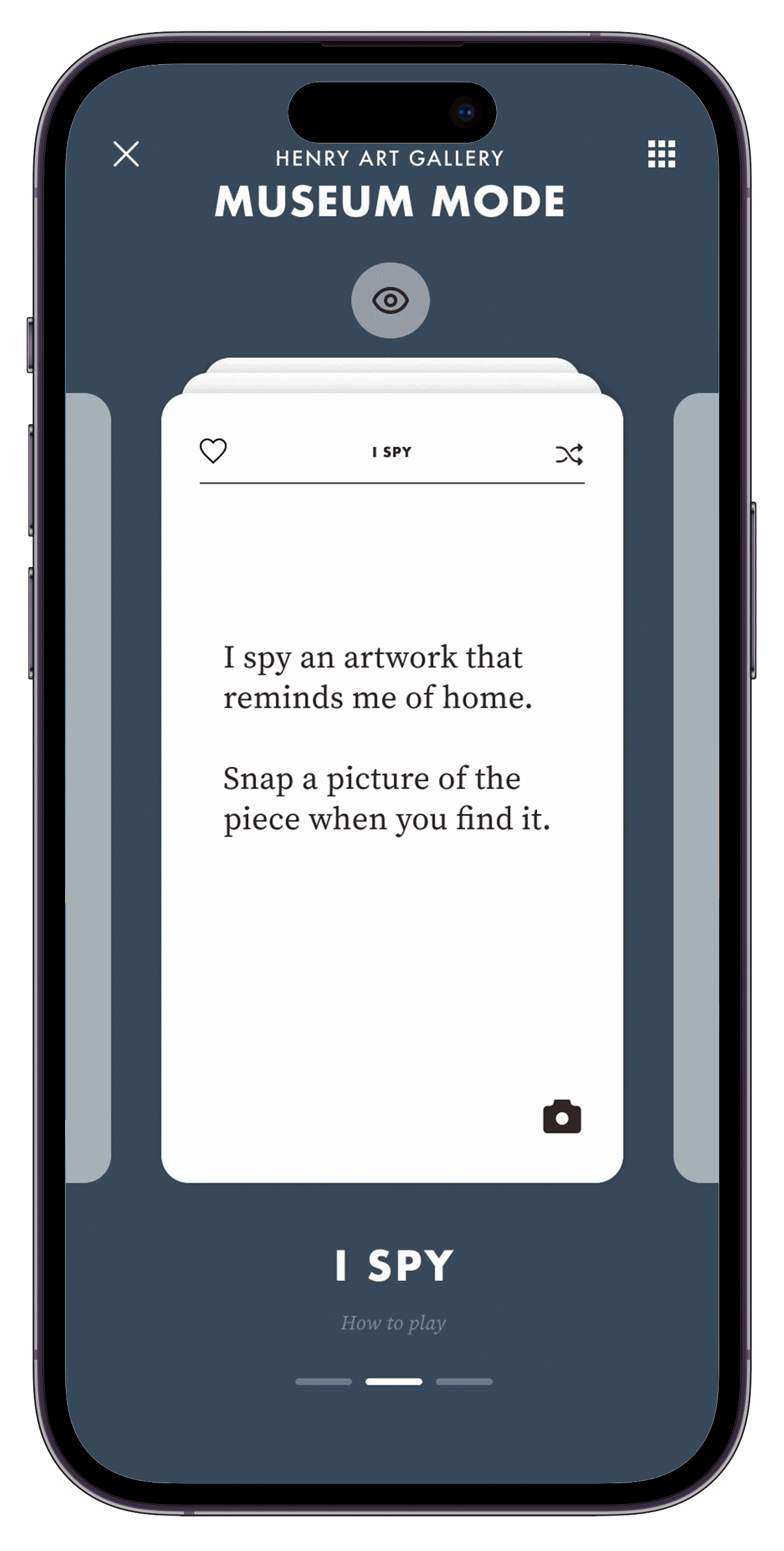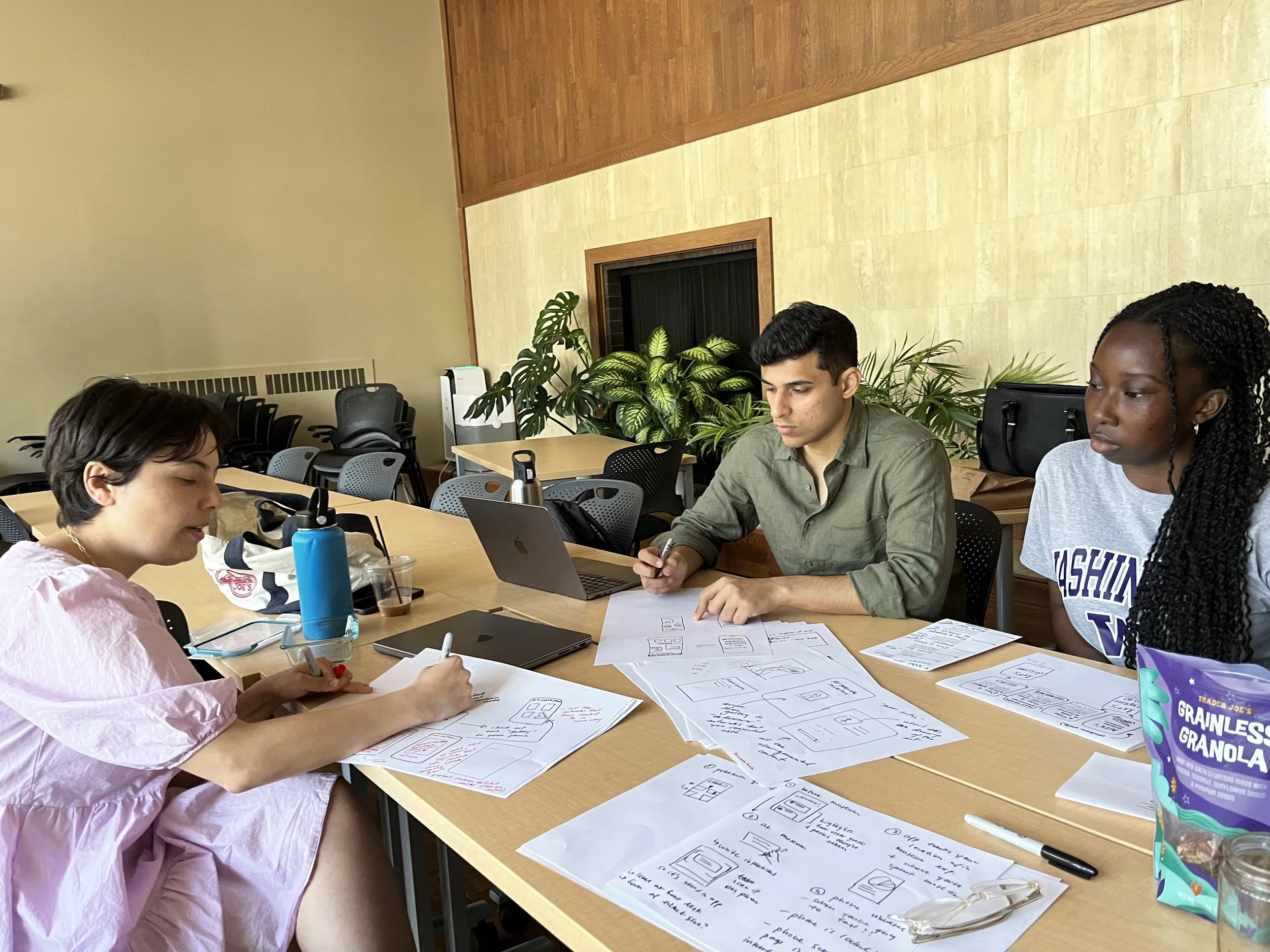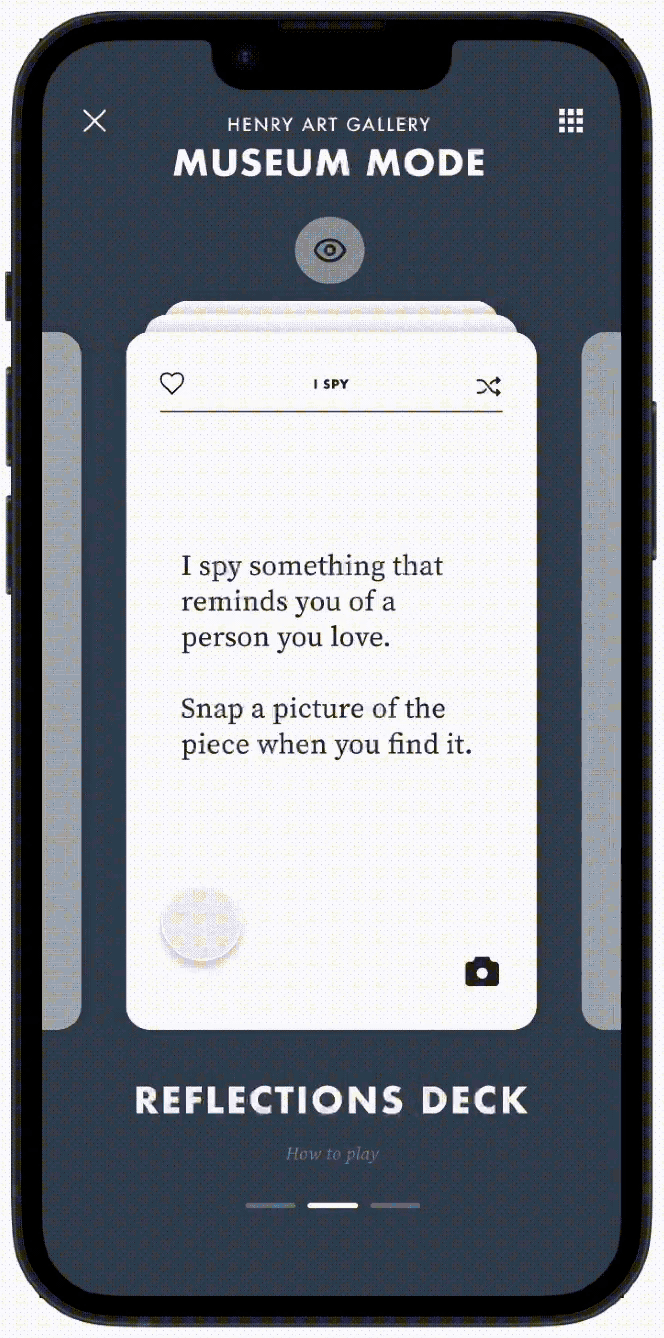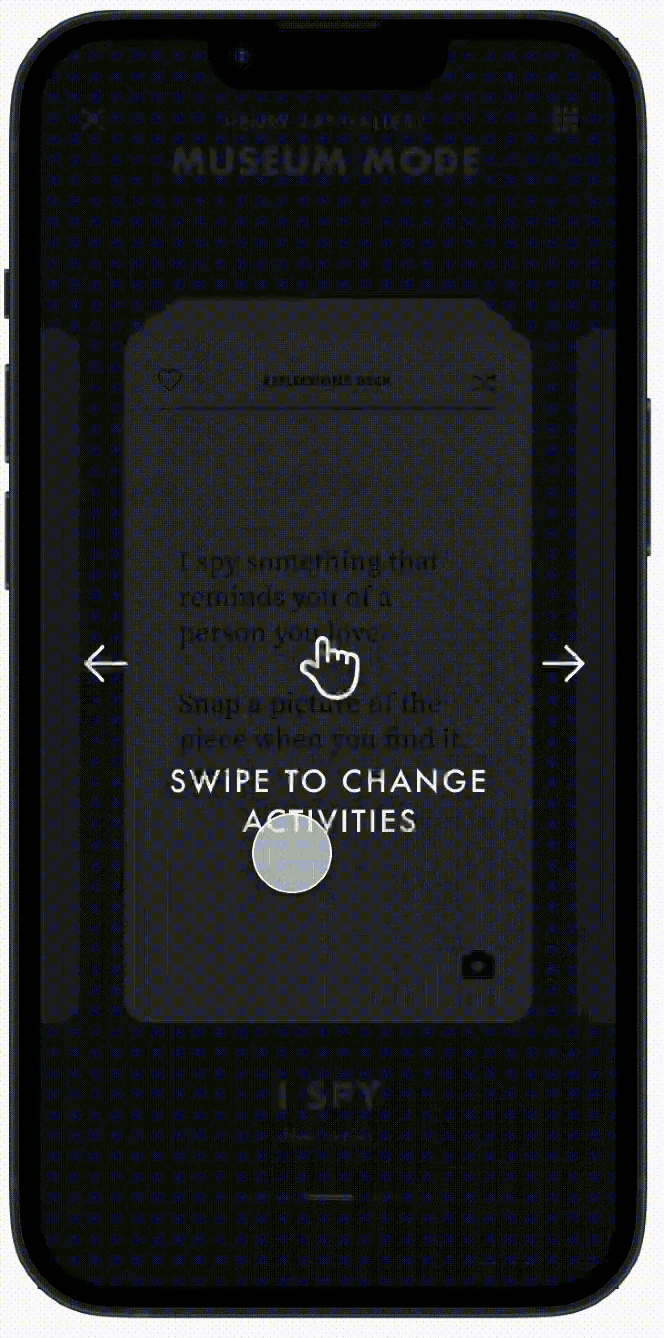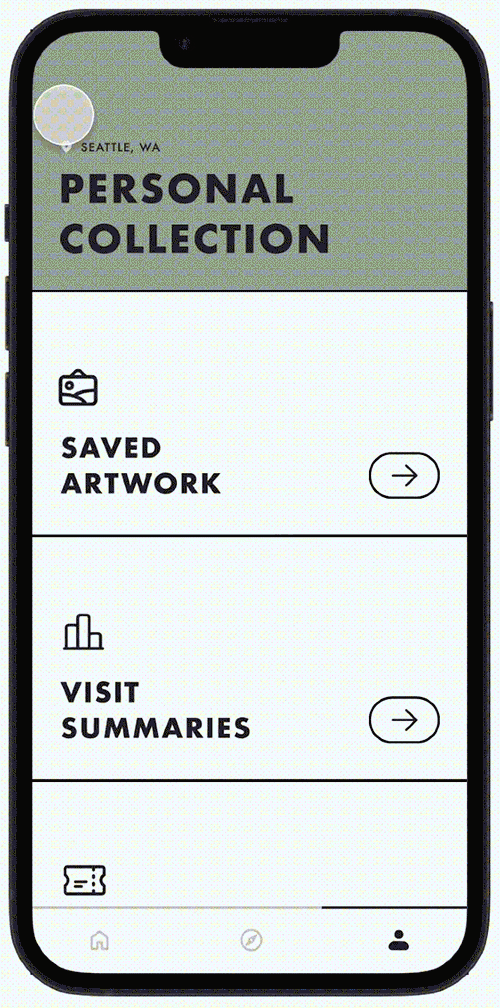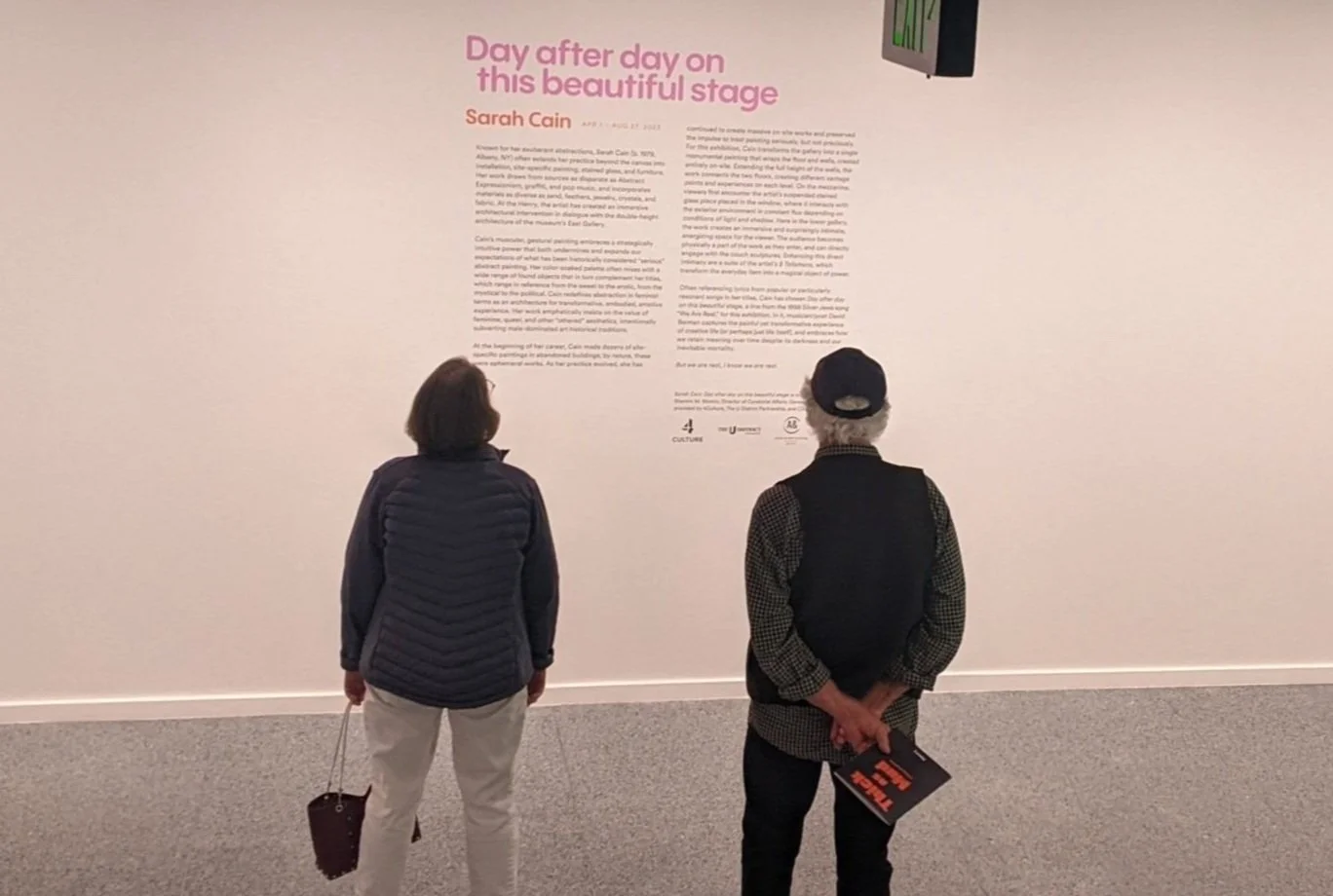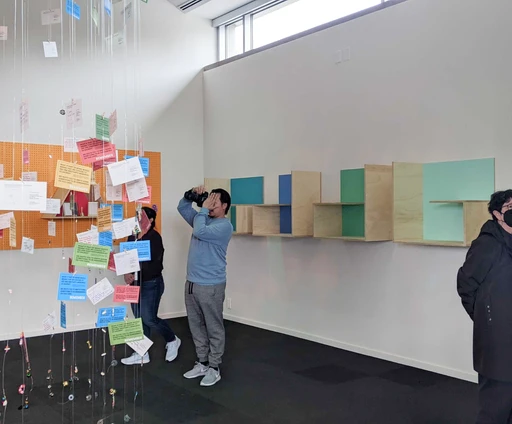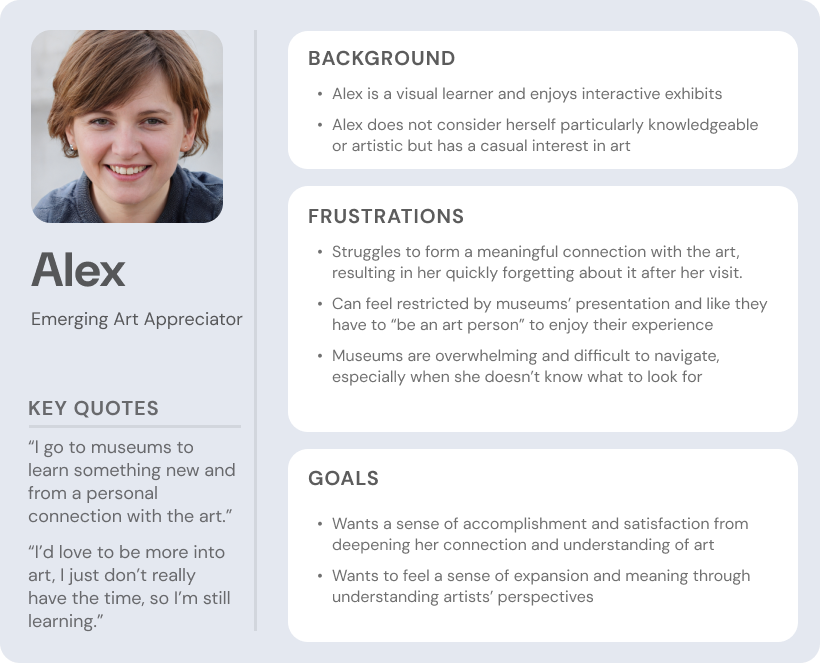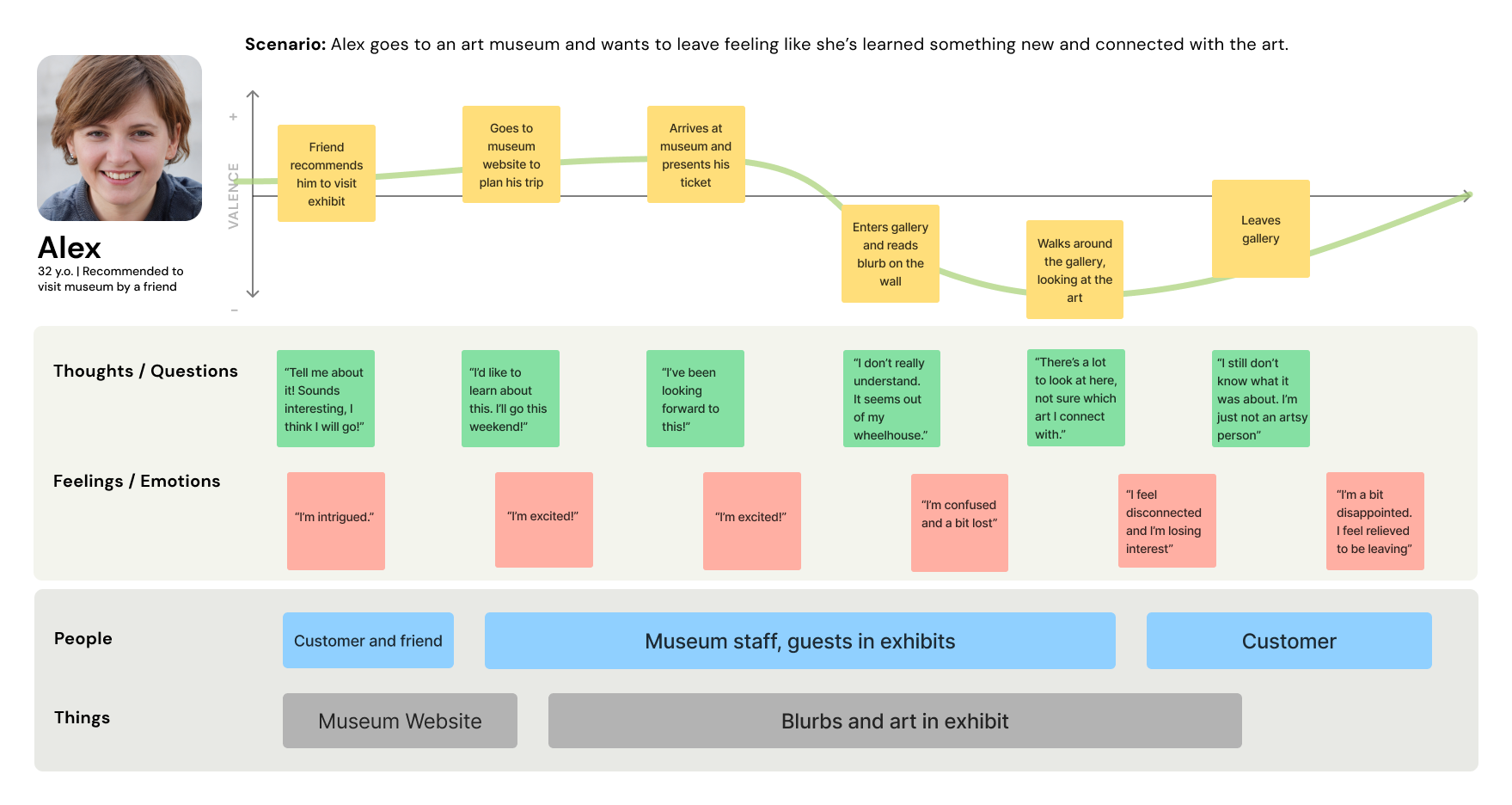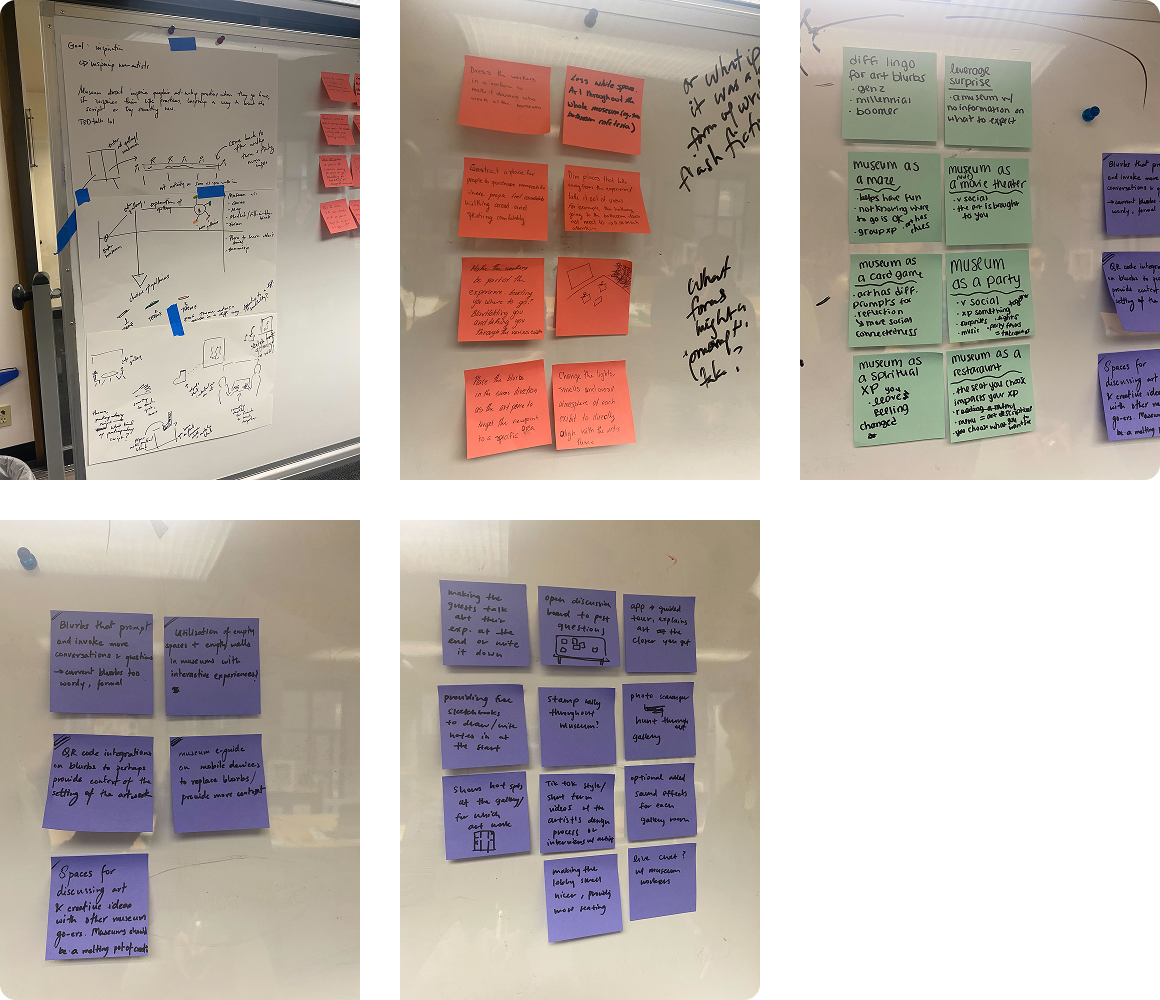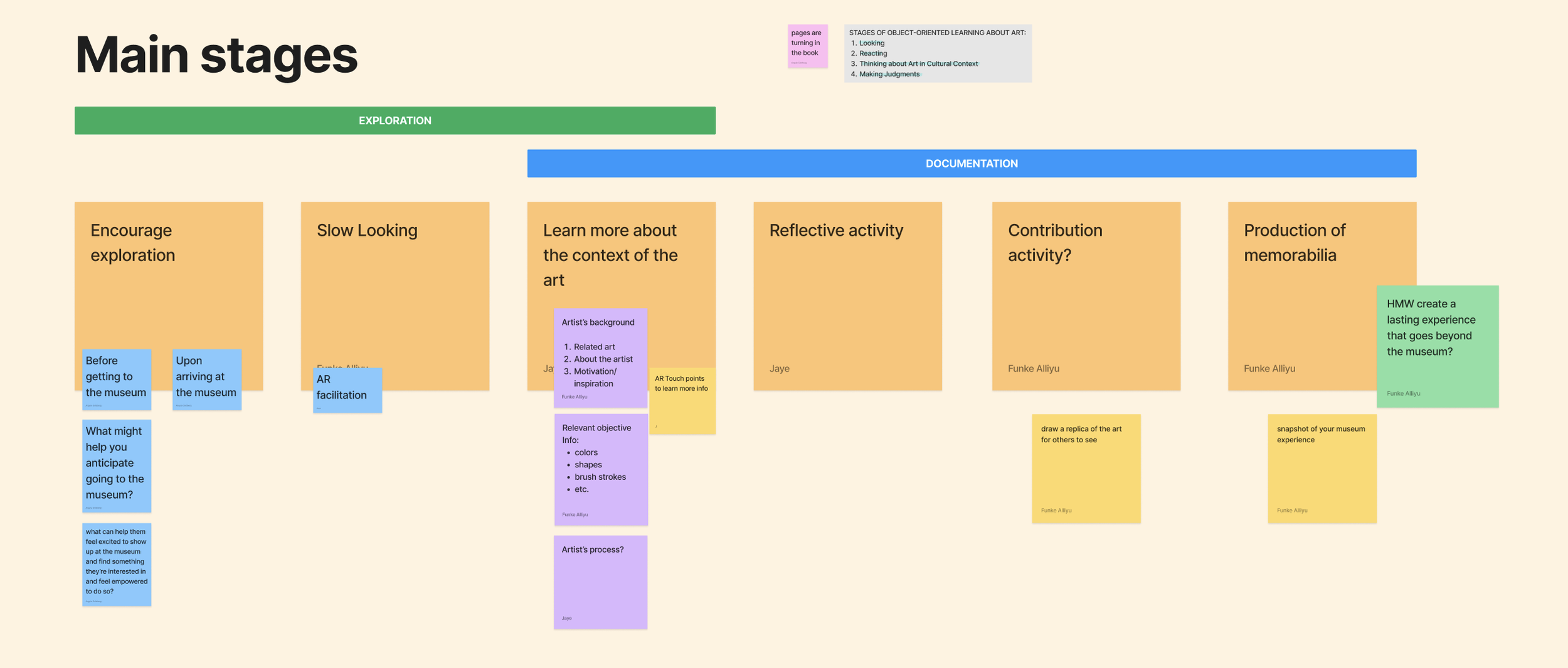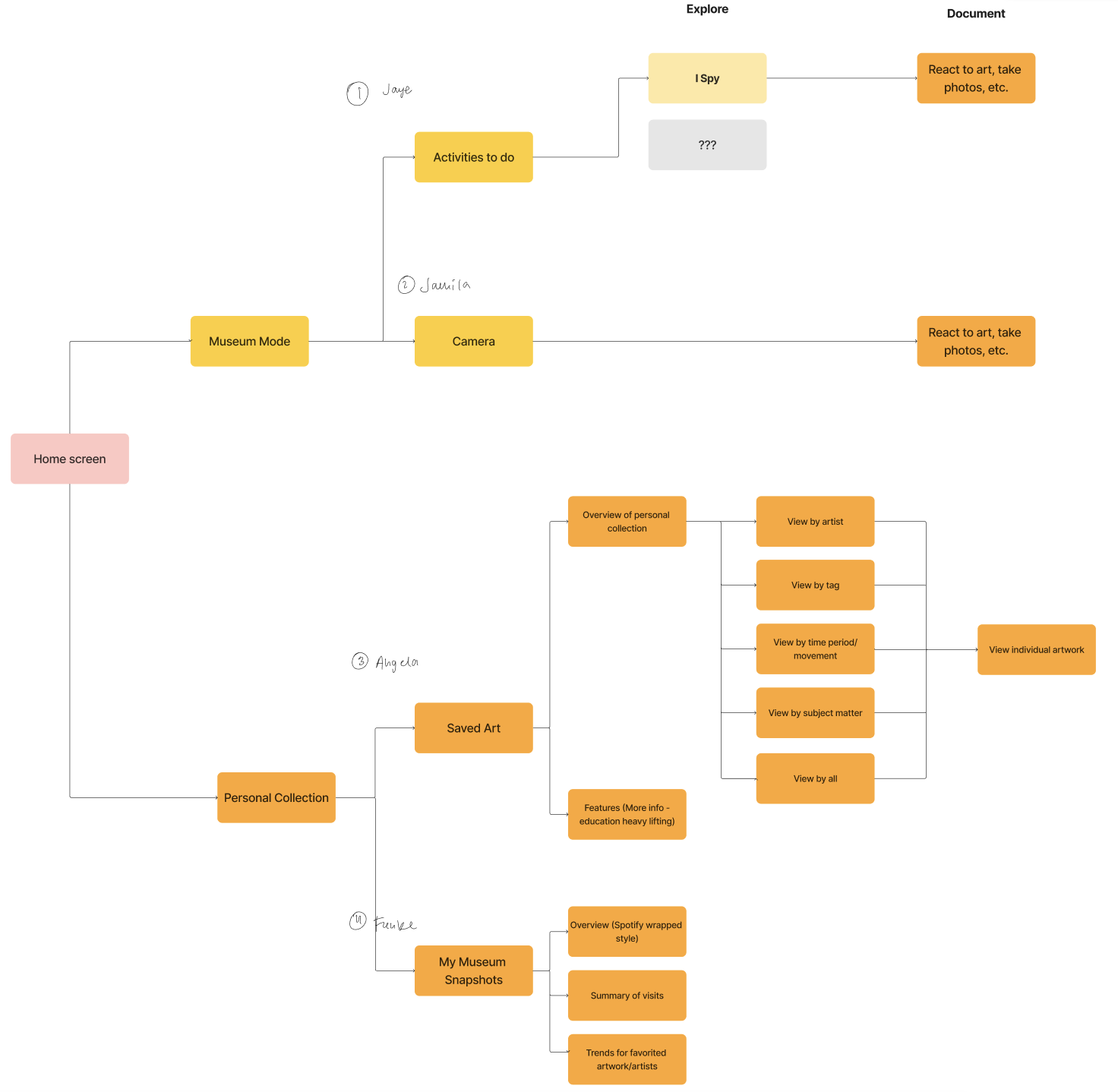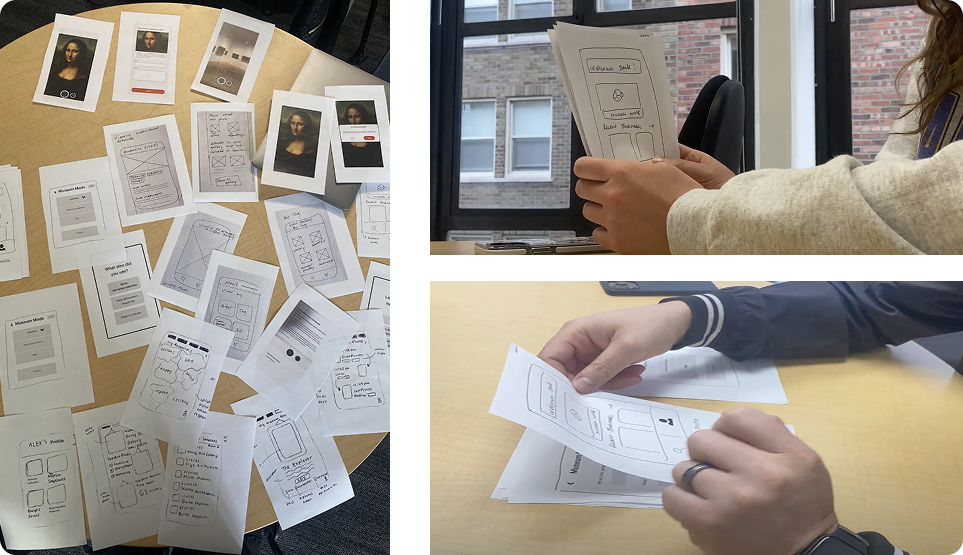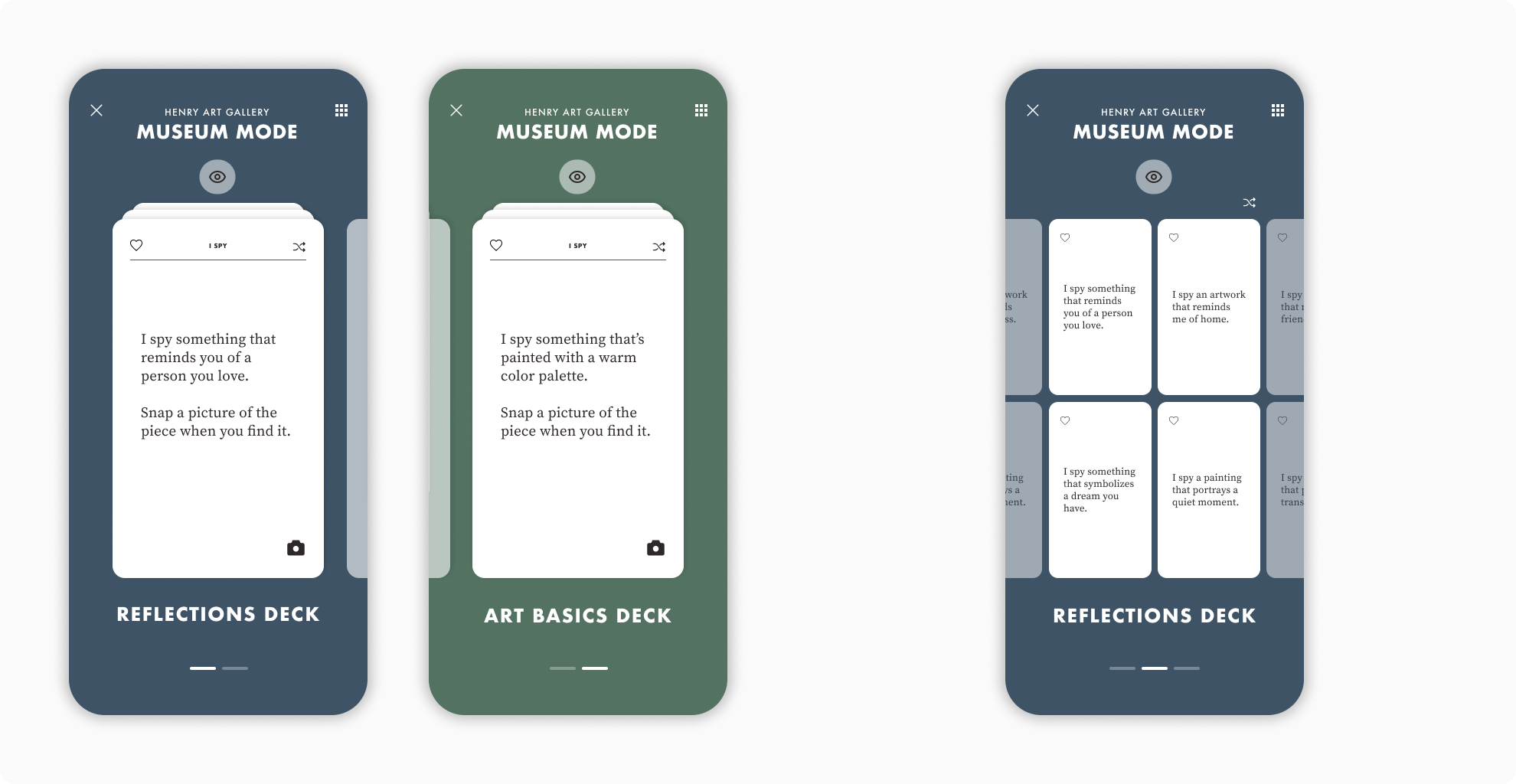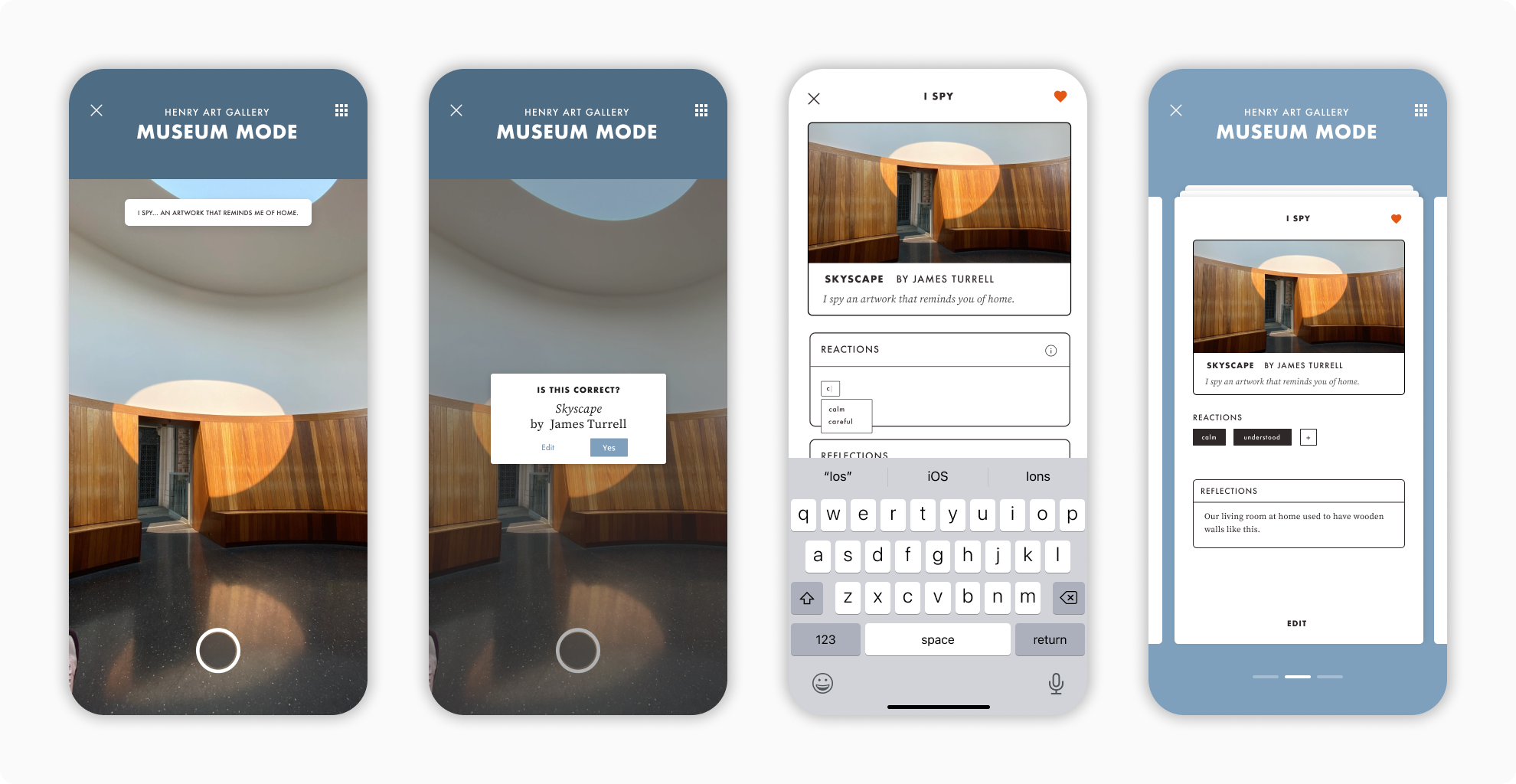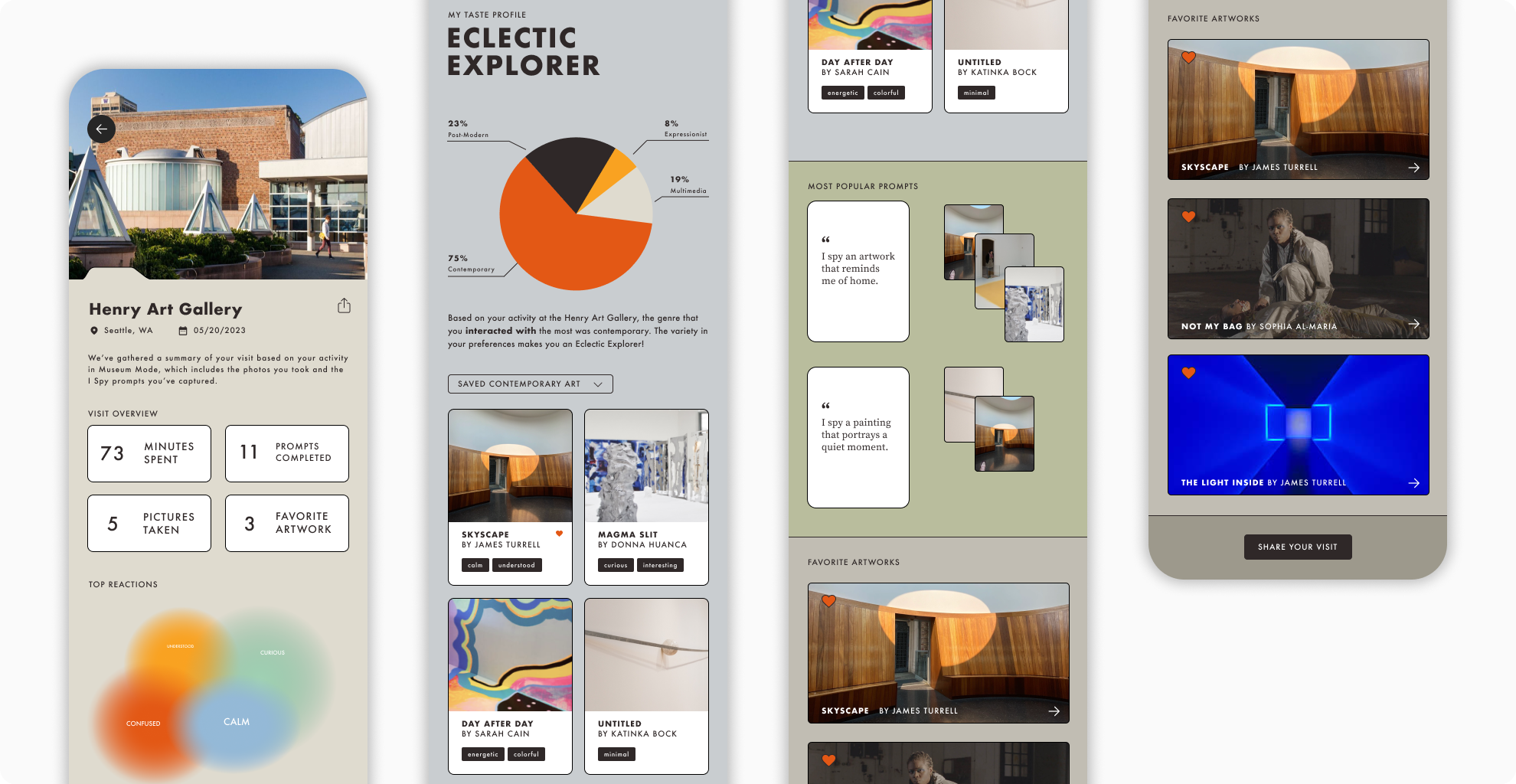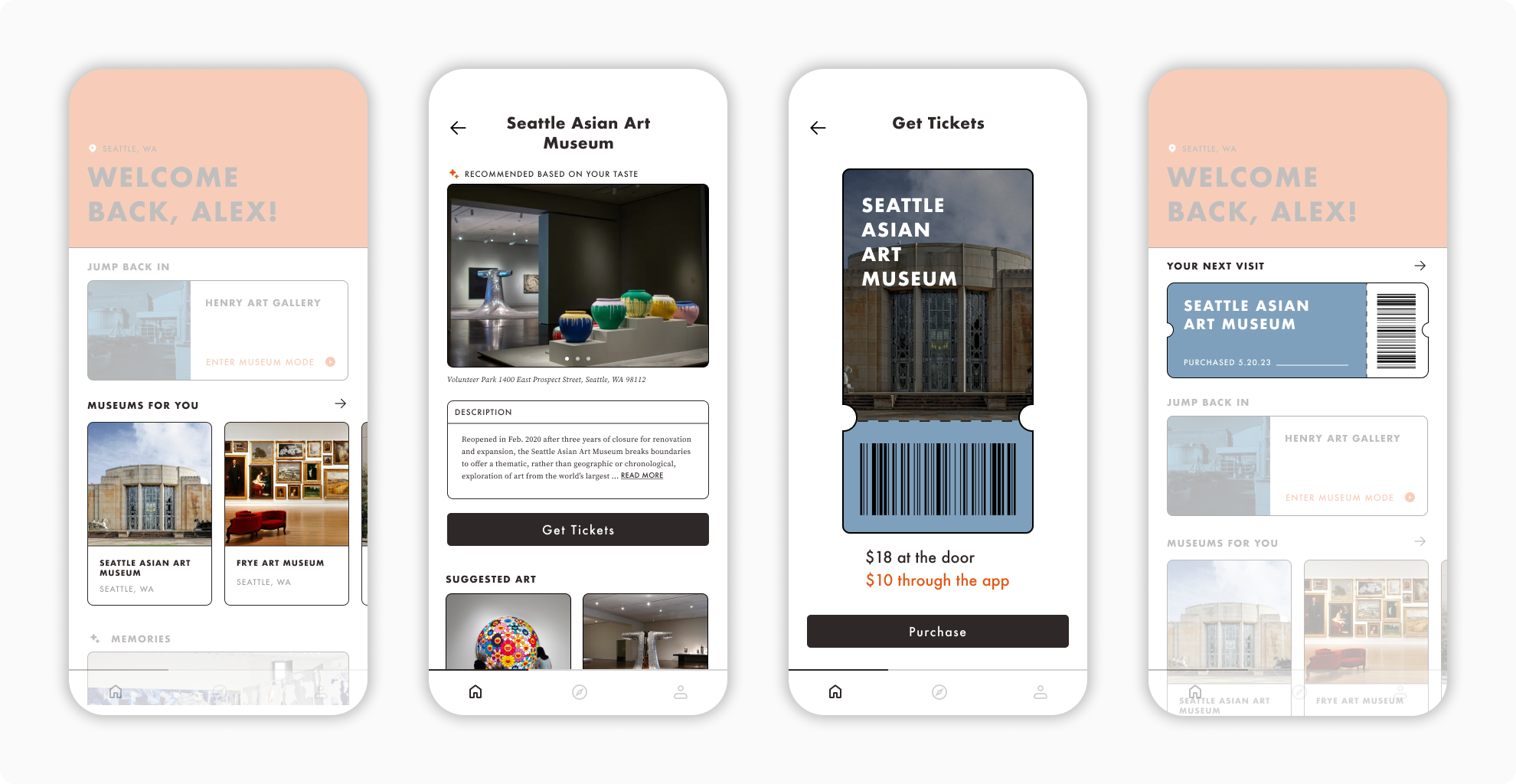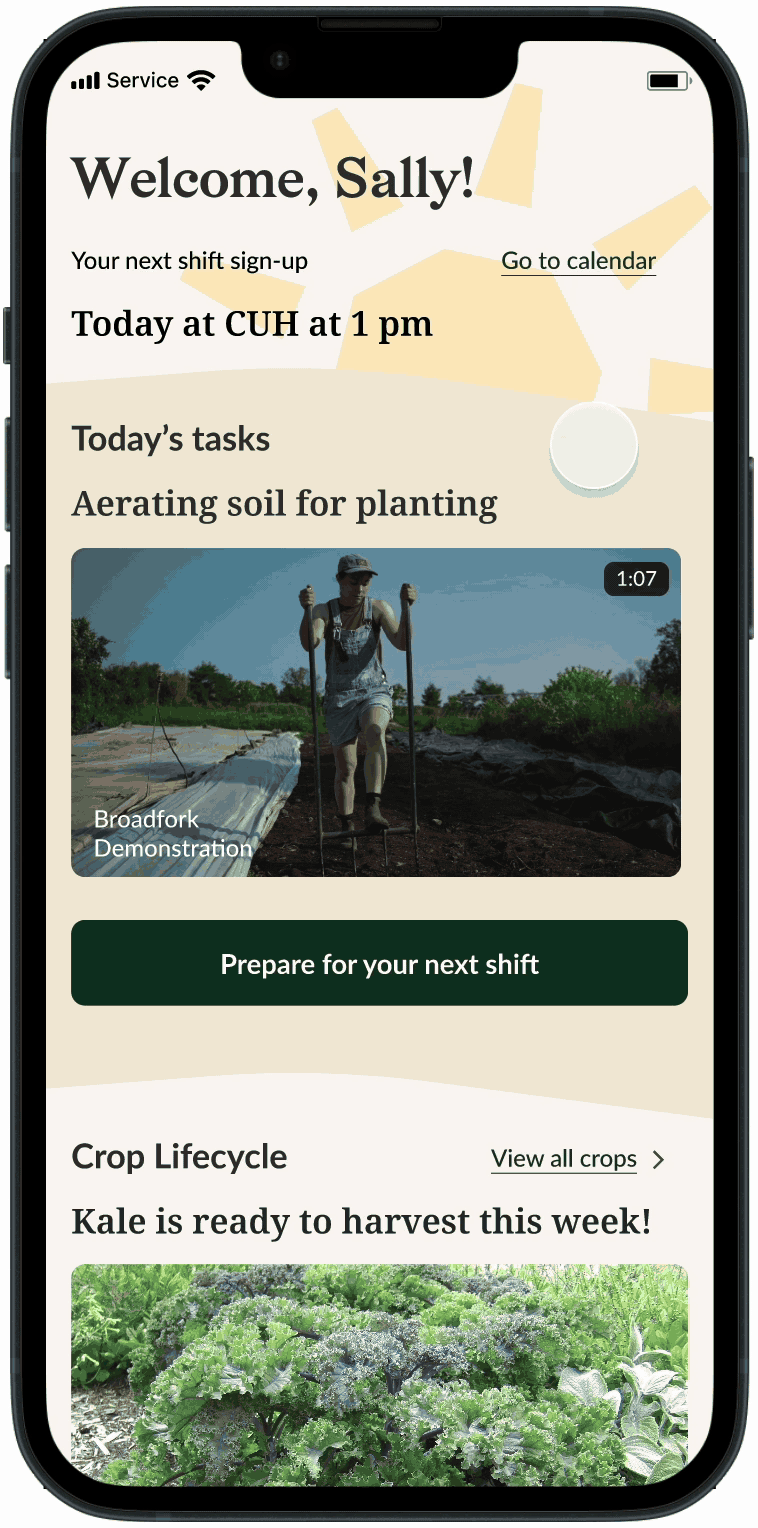
MyMuseum
Mobile app | Customer experience
OVERVIEW
A taste discovery and education platform making art accessible to everyone and boosting long-term engagement at museums
What I Did
UX Research & Desk Research
Service Design & UX Design
Business Strategy
Team
2 other designers
1 other researcher
1 PM
Tools
Figma
Paper prototyping
Timeline
5 weeks
CONTEXT
Background
An experience design project for a graduate level course
This concept was the result of a project for a graduate level course, Designing Information Experiences. Over the course of 5 weeks, my team of 5 was tasked with applying UX methodology and theories of experience in order to create, prototype, evaluate, and iterate on an original concept.
Over the course of five weeks, my team and I applied practical design methods as well as philosophies of experience to design an end-to-end experience.
CONTEXT
Problem Facing Museums
27
seconds spent looking at a work of art, on average
We can help visitors get more out of their museum experiences by connecting more deeply with art.
(source: Smith et al., 2017)
Visitor numbers determine whether a museum can secure funding. But not all museums are “destination museums.”
For this project, we were interested in how to improve art museum experiences in order to benefit both visitors and institutions.
30
months between museum visits, on average
Museums can boost attendance by increasing return visit frequency. This would help secure grants.
(source: Smith et al., 2017)
70%
of visitors are likely to visit a museum’s website post-visit
Institutions can sustain visitor interest through thoughtful digital experiences.
(Source: Paul Marty, museum digital engagement study)
CONTEXT
Design Challenge
Creating a museum experience that is personally meaningful
We conducted 11 interviews at a local art museum. We found that many visitors want to learn about art but need a way to make their own interpretations so the art feels more accessible and meaningful.
How might we extend engagement within and beyond museum walls in a way that feels personal, reflective, and worth coming back for?
CONTEXT
Rationale
People often feel like they have to be “artsy” because museums’ academic tone feels like gatekeeping
Art museums’ top-down approach to art education, such as with blurbs, can make visitors leave the museum feeling frustrated and like they aren’t an “art person.” This is a lost opportunity for museums. A different lens for art engagement, including memorabilia, a tried-and-true feature of quality customer experience design, can meet these needs.
CONTEXT
My Role
I championed our team’s understanding of the problem in order to architect the most insight-driven solution
My main role was leading and guiding concept development and refinement. This included tasks such as conducting research and translating it into design recommendations, CX mapping, providing structure to workshops, creating sketches, user flows and wireframes, and conducting user testing.
I led my team through the design process, providing a holistic perspective grounded in customer experience, industry insight, and the value of creating a design that delights.
MUSEUM MODE - CAMERA
Document the artwork you see at a museum
MUSEUM MODE - I SPY
Explore the museum from a novel perspective
MUSEUM MODE - I SPY
Foster a personal connection with the art through reactions
VISIT SUMMARY
Understand your museum visit through a snapshot
PERSONAL COLLECTION
Revisit your museum experience long after the experience ends
RESEARCH
Field Studies
Guerrilla interviewing and observations at Henry Art Gallery
We paired off to interview a total of 11 willing participants visiting our local UW art museum, the Henry Art Gallery. I talked to people just before entering the museum to learn about their motivations and expectations, and on the museum third floor to find out how their experiences actually were. I was also a fly-on-the-wall observing people’s behavior as they wandered the galleries.
RESEARCH
Findings
We encapsulated our top findings with a primary persona: Alex, the Emerging Art Appreciator
When affinity mapping our notes, we discovered several findings including visitors’ desire to find meaning in their experience at the museum, and that a lack of an emotional or personal connection to the art can be disappointing. Based on our findings about our participants, we defined a persona representing our target user.
RESEARCH
CX Mapping
To understand when we could make the most impact for Alex, we created a CX map
We mapped a customer journey of Alex based on what we learned from our research. We wanted to focus on the issue of experiencing meaning, relevant to our top findings. I suggested that the most critical breakdown is when Alex is wandering the museum and trying to approach the art. Being unable to interpret the art could defeat the entire experience, and that a design solution could support a visitor entering the gallery.
I identified the most critical breakdown as the moment when Alex approaches the art without a mental model for how to engage with it, defeating the purpose of a museum trip.
IDEATION
Initial Brainstorm
Kicking off ideation with 40 ideas
We brainstormed 40 ideas in response to “How might we provide guests with a more meaningful and interactive museum experience in order to help guests understand the art and be more immersed in the experience? We grouped them into themes (Changing the Gallery Interior, Interactive Activities, Open Discussion and Reflection, and Blurb Alternatives and Education) to aid with downselection.
IDEATION
Downselecting & Refining
We refined our ideas using a variety of methods, including design principles, de Bono hats, dot voting, sketching, bodystorming, and storytelling, going from 40 ideas to 20, 10, 5, 3, and then finally 1.
At each stage of downselection, we prioritized our persona’s needs and weighed the pros and cons of ideas in order to decide which ones to keep. The pros of all our final three ideas (educational AR interaction, exhibit evaluation, and reflection room) included the necessary support for personal interpretation and meaning-making. But we favored a mobile educational AR interface with details about artworks because of its flexibility of use throughout the entire gallery experience.
Educational mobile AR interaction was the winning idea for enhancing personal interpretation and meaning-making, and for its flexibility of use throughout galleries.
IDEATION
Designing the Flow
I scaffolded an educational concept of “Exploration and Documentation” using a mobile device in the gallery.
We found through competitive analysis that there are several art museum mobile apps that use AR to make art more interactive and educational. To differentiate our approach, we chose the theme of “exploration and documentation,” inspired by great thinkers such as Leonardo da Vinci and based on the stages of object-oriented art interpretation. Based on this theme, I created a framework of experience that my team and I collaborated on fleshing out. We built out the details even more by collaborating on a user flow.
I established a framework of “Exploration and Documentation.”
We collaborated on a user flow to build out the details.
ITERATION
Paper Prototyping
My team and I produced wireframes, and I tested a lo-fi paper prototype with two participants
I wanted to evaluate the overall desirability and usability of the design, as well specific features including saving art and adding reactions, view options for one’s personal collection, and I Spy prompts.
Takeaways and iterations:
Participants enjoyed gaining insight into their individual preferences.
Participants liked the Reflection prompts, but also wanted to learn about how to look at objective aspects of art, like color and shape. So we created the Art Basics deck.
Participants preferred viewing personal collection based on their own data, such as by reaction tag. (“I would love to see all the art that was shocking to me.”)
A blurb translation feature we were considering didn’t seem useful or interesting. So we removed AR!
RESULTS
I Spy (Gallery Game)
Self-guide in museum galleries through an interpretive lens
Upon entering the gallery, users can open I Spy to help them interact with the art. Each deck is full of cards prompting users to “spy” for works of art that feel connected to the prompt.
DESIGN DECISION
Users can choose from two decks: the subjective Reflections Deck and the objective Art Basics deck. Once they’ve chosen a deck, users can either select a prompt or have them randomized. Prompts are reusable.
RATIONALE
I Spy invites observation that goes deeper than the surface, promoting higher engagement and dwell times. Also, it’s museum-agnostic, making it scalable, unlike museum-specific apps that require a lot of upkeep and aren’t scalable.
RESULTS
Documentation
Contemplate and find personal resonance with art
When finding an artwork related to a prompt, the user can then take a picture of it and record their reactions. The artwork gets saved to their personal collection.
DESIGN DECISION
AI in the camera interface detects the title and artist. Users can add reaction tags and type reflections about their experience of the art, such as why they chose it for that prompt.
RATIONALE
Using AI to detect the art saves users time and effort, and tags are an easy to way add reactions. We had tried a spectrum of reactions in experience prototyping, but participants preferred the simplicity of autosuggest when typing in.
RESULTS
Discover Your “Artsy” Identity
Dive into your taste with a summary of your data
Later that day, a notification will say the Visit Summary is ready. Users can explore an overview of their recent visit, including their Taste Profile, helping them deepen their personal understanding of art and their identity as an art lover.
DESIGN DECISION
A visual breakdown of taste including by art movement, reaction clouds, and saved prompts and images provides users with unique memorabilia for their visit.
RATIONALE
Memorabilia is a key part of customer experience that can help generate loyalty (Pine & Gilmore 1999). We also wanted to overcome the initial barrier of people feeling like they aren’t “artsy” enough — MyMuseum shows them that they already are, and in what ways.
RESULTS
Plan the Next Visit
Receive recommendations and buy tickets in-app
MyMuseum recommends participating museums to users for their next outing. Users can learn details about upcoming exhibitions and receive discounts on tickets. They can show their ticket in the app at the museum.
DESIGN DECISION
Recommendations are based on users’ taste profile and saved art.
RATIONALE
Research participants felt they didn’t know much about art styles or how to choose an exhibition they might like. Offering personalized recommendations based on users’ own data helps them find their next trip to the museum.
REFLECTION
What I Learned
This was my first time designing for customer experience. Here’s what I learned.
How to apply lean canvas framework to developing an experience design that meets business opportunities
Theming can be an invaluable strategy to create a service experience that is unique to anything on the market
Putting conversations into action and motion is critical. When discussing concepts, embodied methods like bodystorming, sketching, and storytelling broke us out of ruts
How to talk to subject matter experts to understand the industry POV
We had a LOT of initial findings and insights—turns out museums are a sticky experience for people in a lot of ways! Both good and bad. Understanding key breakdowns in the CX journey is a helpful way to organize and prioritize.
How to design forms for mobile and conduct a heuristic evaluation
